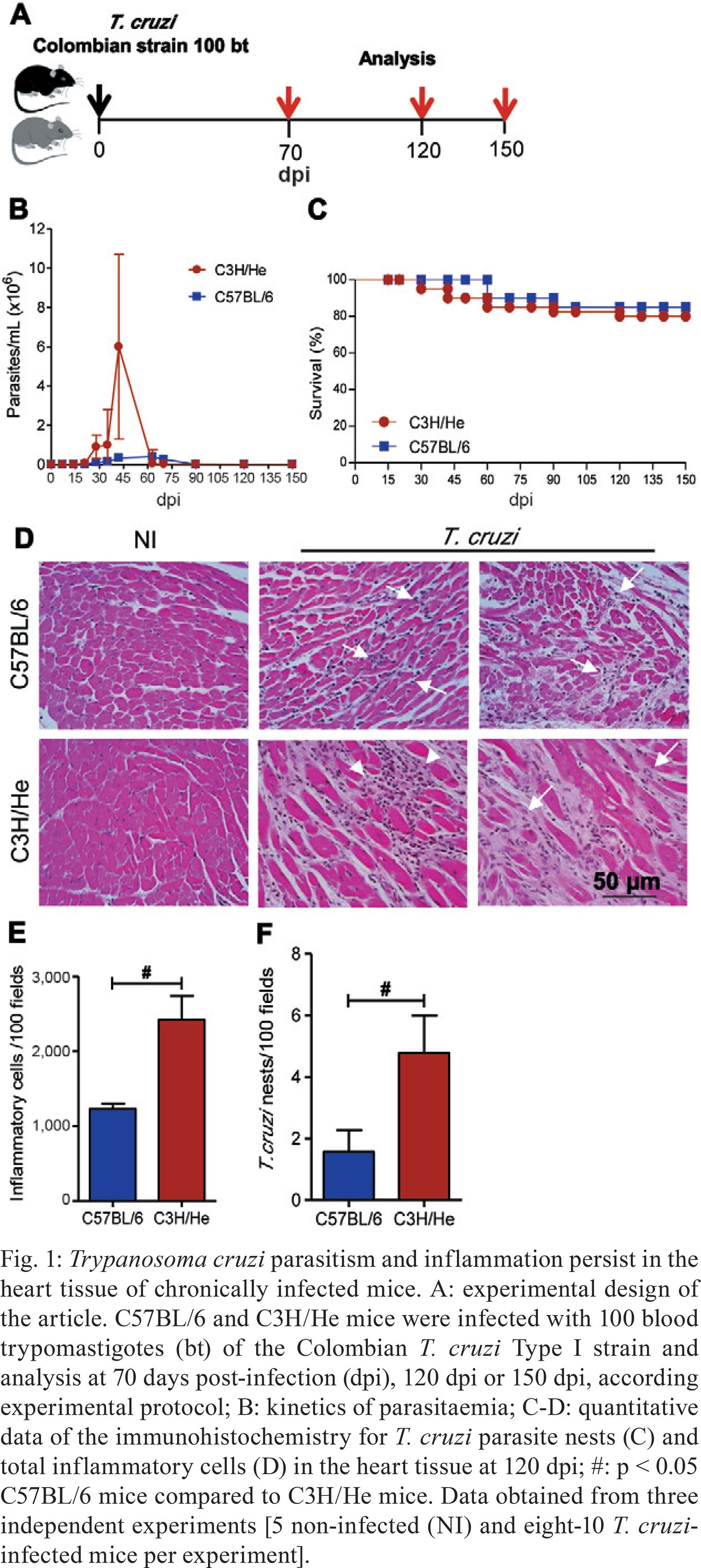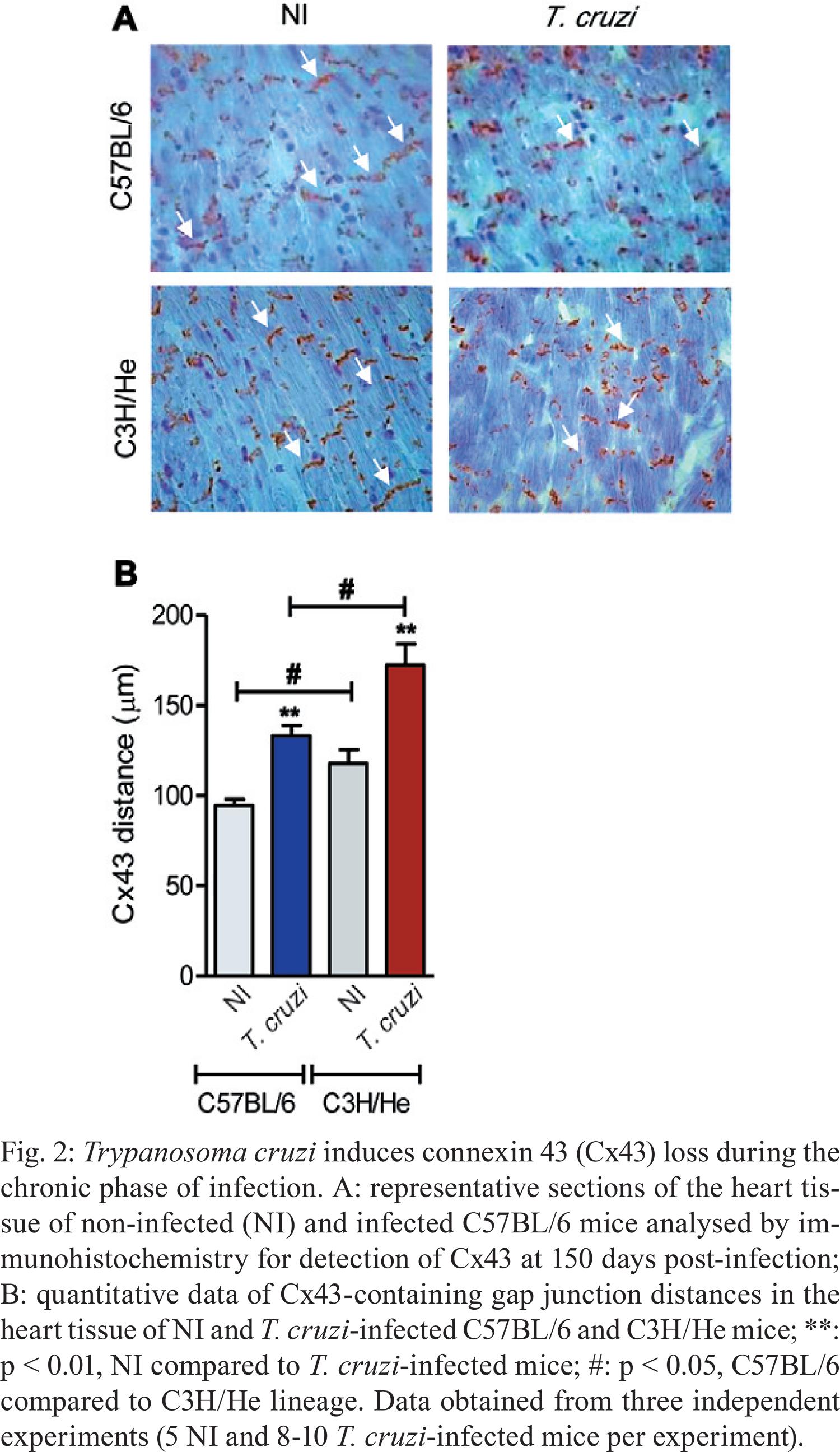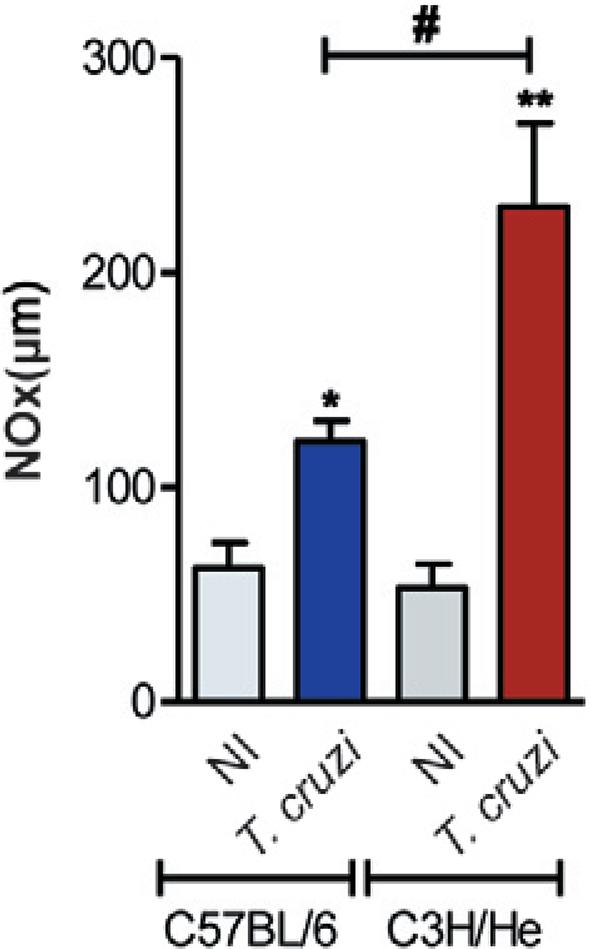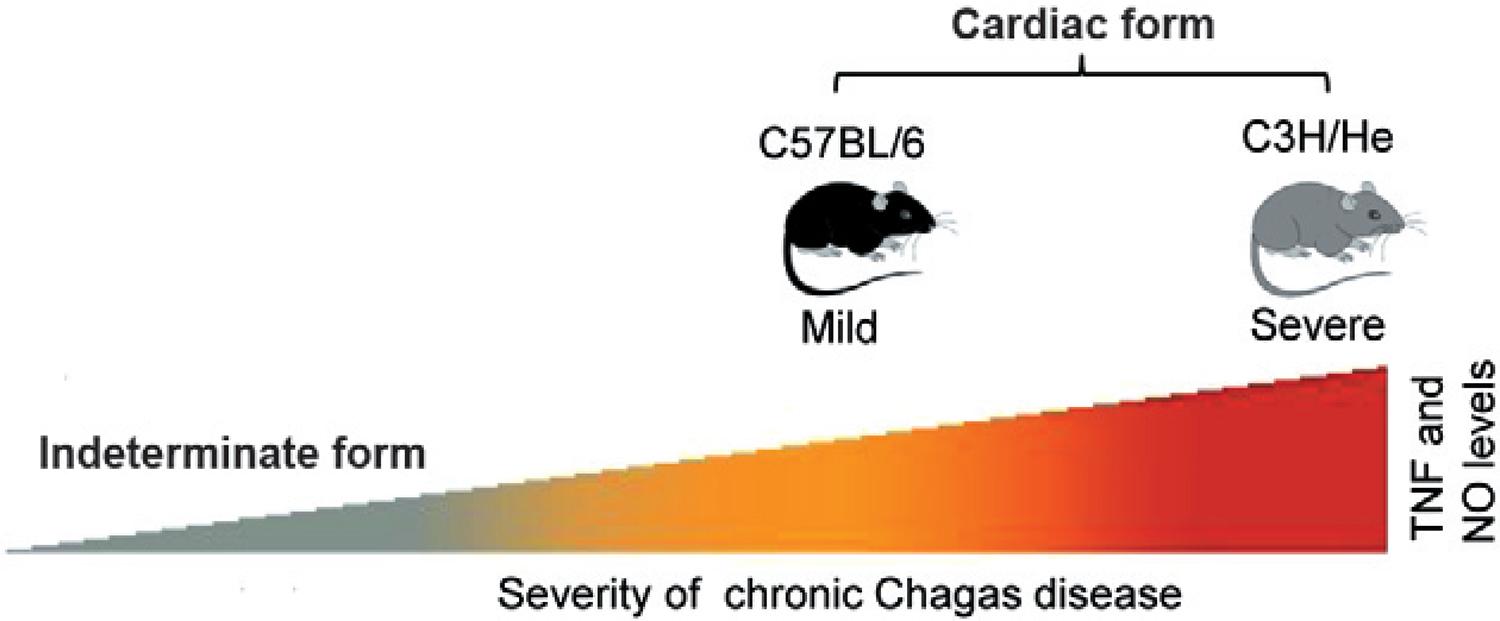Heart tissue inflammation, progressive fibrosis and electrocardiographic alterations occur in approximately 30% of patients infected by Trypanosoma cruzi, 10-30 years after infection. Further, plasma levels of tumour necrosis factor (TNF) and nitric oxide (NO) are associated with the degree of heart dysfunction in chronic chagasic cardiomyopathy (CCC). Thus, our aim was to establish experimental models that mimic a range of parasitological, pathological and cardiac alterations described in patients with chronic Chagas’ heart disease and evaluate whether heart disease severity was associated with increased TNF and NO levels in the serum. Our results show that C3H/He mice chronically infected with the Colombian T. cruzi strain have more severe cardiac parasitism and inflammation than C57BL/6 mice. In addition, connexin 43 disorganisation and fibronectin deposition in the heart tissue, increased levels of creatine kinase cardiac MB isoenzyme activity in the serum and more severe electrical abnormalities were observed in T. cruzi-infected C3H/He mice compared to C57BL/6 mice. Therefore, T. cruzi-infected C3H/He and C57BL/6 mice represent severe and mild models of CCC, respectively. Moreover, the CCC severity paralleled the TNF and NO levels in the serum. Therefore, these models are appropriate for studying the pathophysiology and biomarkers of CCC progression, as well as for testing therapeutic agents for patients with Chagas’ heart disease.
Chagas disease; cardiomyopathy; experimental model; tumour necrosis factor; nitric oxide








